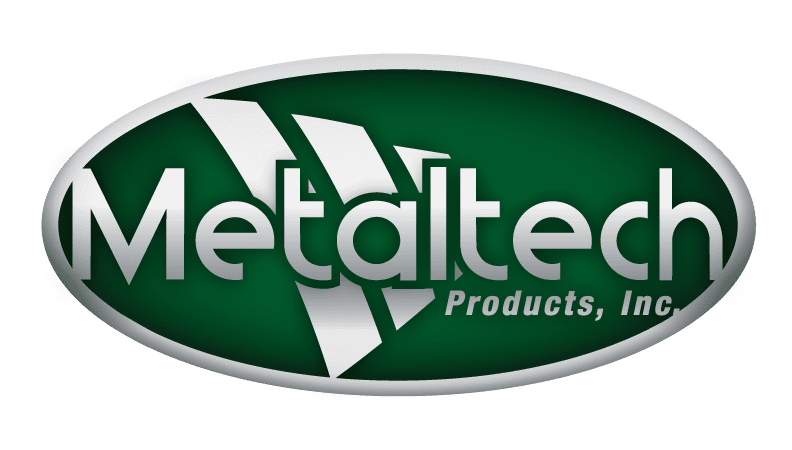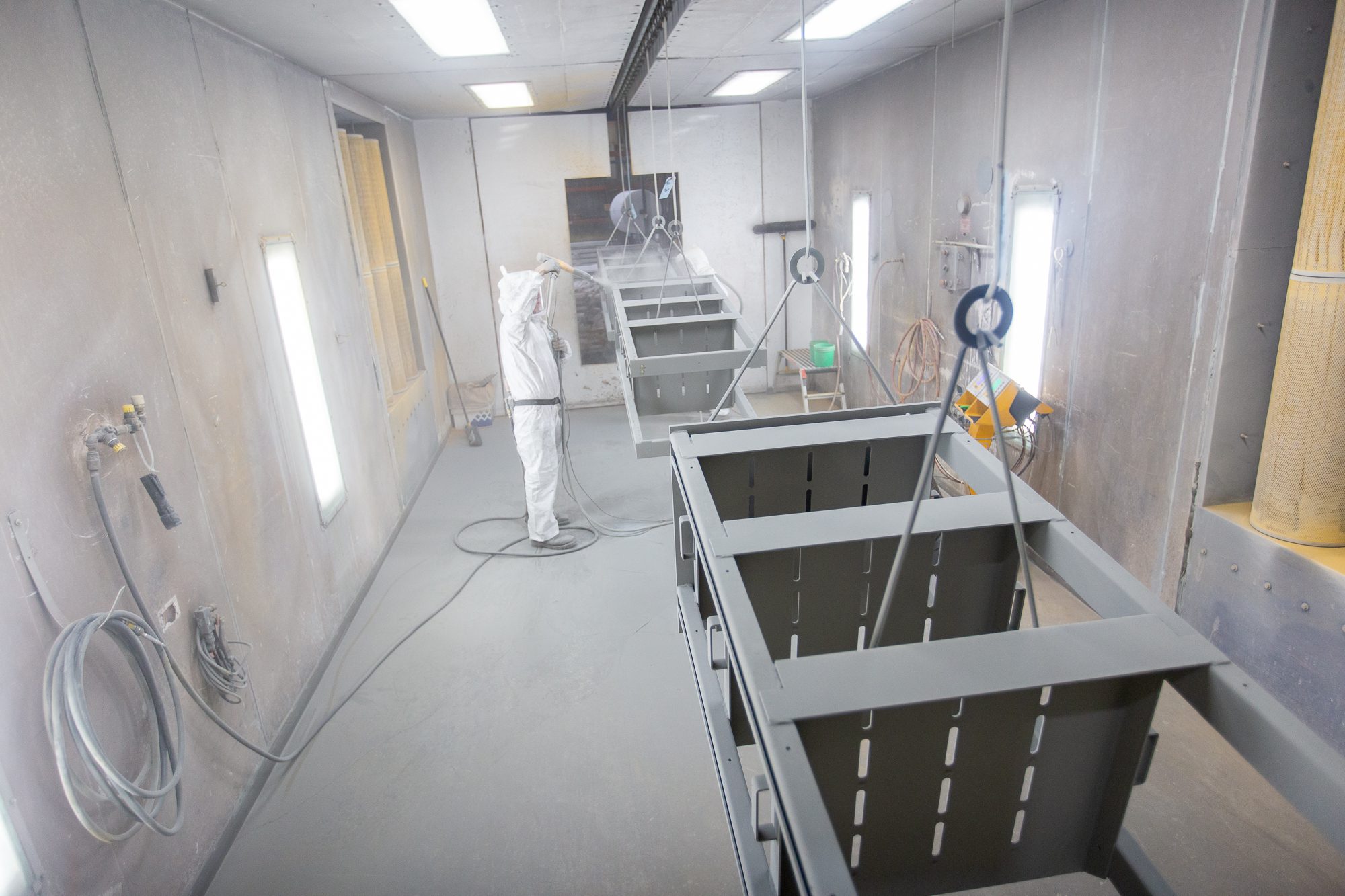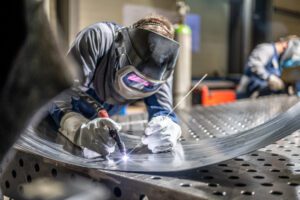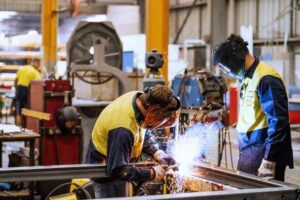Powder coating is often the last step in manufacturing processes. It gives the final part or product a color, texture or protective layer. Many component parts and end products have a custom powder-coated finish. Appliances, furniture, tools, wheelchairs, car parts and fencing are a few examples. Powder coating spans industries because of its ability to create a durable yet attractive finish.
How Does Powder Coating Work?
What is powder coating, and why is it so durable? Learn more about how powder coating works and why it’s better than regular paint for most applications.
Powder coating is an electrostatic process. It uses dry powder and an electric charge to create a final finish. Polymer resins, curatives, pigments and leveling agents are used to form the powder. These ingredients are melted together and then ground to a powder similar in texture to baking flour.
Powder coat “paint” comes in numerous colors and decorative textures. You’ll be able to find the custom color you need for your component parts. Powder coatings can also be functional and protect against corrosion.
To apply powder coatings, you use a process called electrostatic spray deposition (ESD), which gives the powder its electrostatic charge. When particles in the powder are charged, they become attracted to the grounded, metal part. This attraction causes the powder to stick to the part.
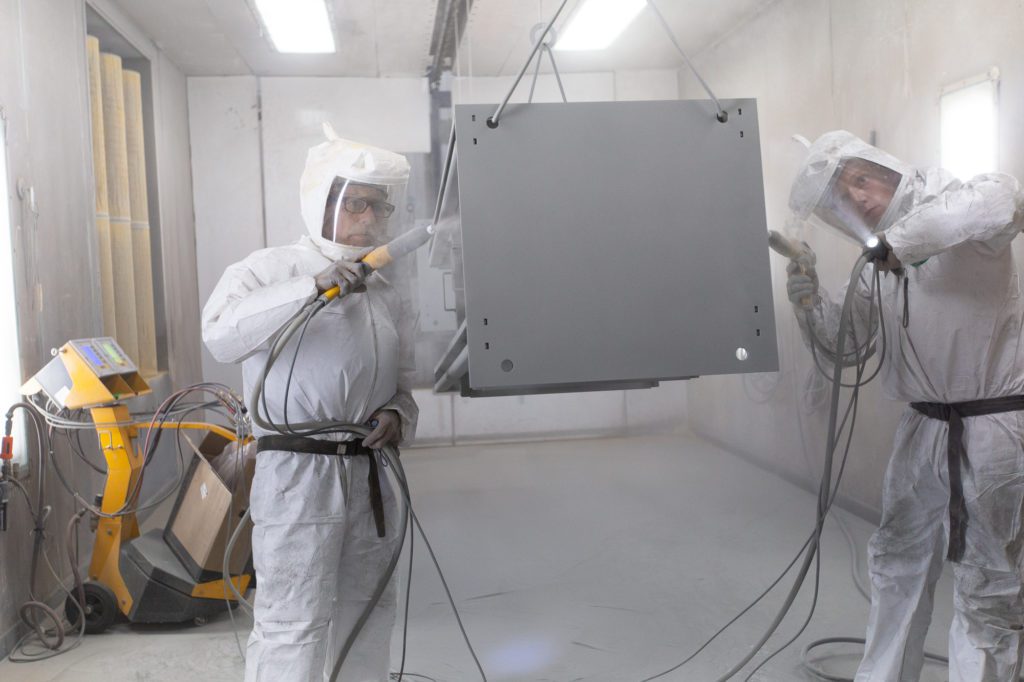
Powder Coating Process Steps
Powder coating requires special equipment. You need a powder coating gun to provide the charge, a curing oven to heat the powder, and personal protective equipment to remain safe within the booth. Anyone working in a powder coating booth should wear a respirator, face shield, protective clothing and conductive gloves.
The steps for powder coating are as follows:
- Prepare the surface for powder coating. This part of the process may include both physical methods (sanding or media blasting) and/or chemical methods to properly clean and prepare the metal substrate to receive powder coatings
- Select your powder coating color, texture or finish.
- Apply the powder using a spray gun to provide the charge. As you use a powder coating gun, compressed air moves the powder through the gun. Once powder has left the gun, it has an electrostatic charge and will stick to the parts.
- Continue to spray the parts until covered.
- Move the parts into a curing oven. Powder coating oven temperatures range from 325℉ to 450℉. Inside the curing oven, the powder melts to form a continuous film across the surface of a part. Depending on the material, thickness and shape of the parts, curing may take ten minutes or over an hour.
- Once the parts are cured and cool, they can move onto the next step to be assembled or packaged.
Though electrostatic spray deposition (ESD) is a common way to apply powder coatings, you can also use a fluidized bed to apply the powder. With this method, parts are pre-heated and dipped into the powder, which melts onto the parts.
Paint v. Powder Coating
Is powder coating really better than painting? Traditional wet painting can cause more irregularities in the finish due to run-off, dripping and sagging. Wet painted parts need time to air dry so that the solvents evaporate. If you don’t include flash-off time for paint, it may not dry correctly, and adding second coats to wet paint can cause more parts to hit the reject pile.
There’s no worry that excess paint or drippage will ruin a part’s final finish with powder coating. Powder coating is a dry finishing process, so there’s no “wet” stage involved. Using powder coating reduces the number of reject parts because it eliminates many opportunities for error that exist with wet paint.
A powder-coated finish is stronger and more durable than a paint finish. Powder coatings can withstand moisture, chemicals, light and impacts more than their liquid paint counterparts. The best part? Powder coatings can last up to 15 to 20 years depending on the powder’s composition and the type of coating.
Environmental Benefits
Liquid paints are made from solvents; therefore, they create hazardous emissions. As paints dry, they release volatile organic compounds (VOCs) into the air. VOCs can be harmful to human health if you’re exposed to high levels for long periods of time.
Powder coatings contain no solvents, so little to no VOCs are released into the air during the process. If powder coating replaced all solvent coatings on metal, it would reduce greenhouse gas emissions by 2.9 million trips around the world by car.
Another benefit of powder coating is that the powders can be reused. Overspray can be returned and recirculated through the system, reducing the total amount of waste created.

What Can You Powder Coat?
Many objects people use at home or work have been powder coated. Kitchen appliances, bathroom fixtures, furniture and exercise equipment all receive powder coatings. Grills, lawn mowers, shovels and gardening tools may be powder coated, too. Powder coating is commonly used for:
- Construction. How durable is powder coating? Ask those who use it for tractors, trailers, forklifts and other machinery that needs a tough, protective layer. Powder coating stands up against the elements and future wear and tear.
- Automotive. Powder coatings ride with you through the sun, wind, rain and snow every day. Numerous automotive parts are powder coated, including wheels, bumpers, door handles and valve covers.
- Housing. Powder coatings are also found on shutters, gutters, fencing and aluminum windows. How long does powder coating last? It’s made to last years while exposed to weather and strong light, day in and day out. Powder coating is with homes and buildings for the long-haul.
- Other. Playground equipment, gas pumps, fire extinguishers and even ski poles are all items that are commonly powder coated.
With its protective properties, powder coating creates more durable, longer-lasting end products.
Are you looking for a custom powder coating company?
Contact Metaltech for more information about our on-site powder coating capabilities, or request a quote today to get started on your custom finish.
